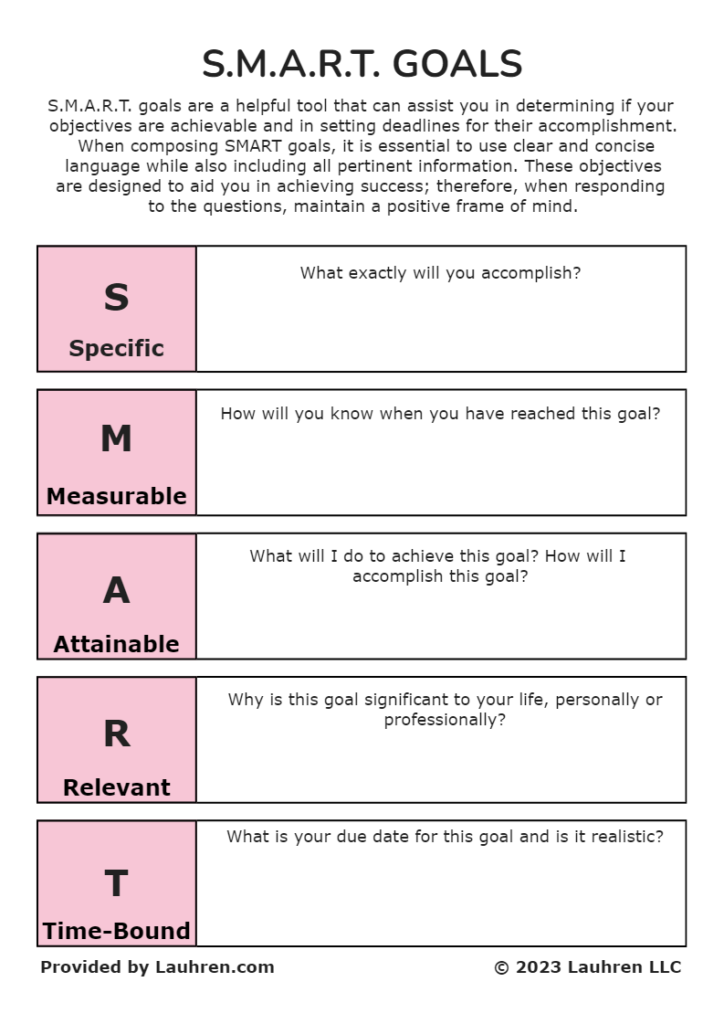SMART Goals Worksheet
Setting goals is a fundamental key to success. However, not all goals are created equal. In the world of project management and personal development, SMART goals have become a reliable tool for carving a path to achievement. These goals are Specific, Measurable, Attainable, Relevant, and Time-bound. To make the process of setting these goals easier, many turn to SMART goals worksheets.
What are SMART Goals?
SMART is an acronym that stands for Specific, Measurable, Attainable, Relevant, and Time-bound. These criteria are used to ensure that goals lead to action and are aligned with broader objectives.
- Specific: Goals should be well-defined and clear about what is to be achieved.
- Measurable: Goals should have criteria for tracking progress and determining when the goal has been met.
- Attainable: Goals should be realistic, considering available resources and constraints.
- Relevant: Goals should align with broader objectives and have a clear purpose or benefit.
- Time-bound: Goals should have a clear timeframe or deadline for completion.
The Role of SMART Goals Worksheets
A SMART goals worksheet is a tool that individuals, teams, and organizations use to plan their goals effectively. These worksheets guide users through the process of defining their goals according to the SMART criteria. They help ensure that the goals are realistic, aligned with broader objectives, and have a clear path to achievement.
How to Use a SMART Goals Worksheet
Using a SMART goals worksheet is straightforward. The worksheet typically includes sections for each of the SMART criteria, with prompts or questions to guide the user in defining their goal. Here’s a step-by-step guide:
- Initial Goal: Write down the goal you have in mind.
- Specific: Define what you want to accomplish, who needs to be included, when you want to do this, and why this is a goal.
- Measurable: Determine how you can measure progress and know if you’ve successfully met your goal.
- Attainable: Assess if you have the skills required to achieve the goal or if you can obtain them. Consider the motivation for this goal and if the effort required is on par with what the goal will achieve.
- Relevant: Reflect on why you are setting this goal now and if it aligns with overall objectives.
- Time-bound: Set a deadline and ensure it is realistic.
- SMART Goal: Review what you have written, and craft a new goal statement based on the answers to the questions above.
In conclusion, SMART goals worksheets are a powerful tool for anyone looking to set effective, actionable goals. They provide a structured approach to goal setting that ensures goals are specific, measurable, attainable, relevant, and time-bound. Whether you’re setting personal goals or professional ones, a SMART goals worksheet can be a valuable asset in your journey to success.
Remember, the key to achieving any goal is not just in setting it but also in following through. So, set your SMART goals today and take the first step towards your success!
